Don't Void Your Coverage: Essential Maintenance and Exclusions from Your Mazda Warranty
Understanding Your Mazda Warranty: The Foundation of Peace of Mind
When you purchase a new Mazda, it typically comes with a comprehensive factory warranty package. This often includes a Bumper-to-Bumper Limited Warranty and a Powertrain Limited Warranty, covering different components for varying durations or mileage. These warranties are a manufacturer's promise to repair or replace parts that fail due to defects in materials or workmanship under normal use. They offer a significant layer of protection and can save you thousands in repair costs. But here's the kicker: this promise comes with conditions. Think of your warranty as a two-way street; Mazda provides the coverage, and you, the owner, are responsible for upholding your end of the bargain, primarily through proper vehicle maintenance.
The Golden Rule: Follow Your Mazda's Maintenance Schedule
This is arguably the single most important aspect of maintaining your Mazda warranty. Every Mazda comes with an owner's manual that includes a detailed maintenance schedule. This schedule isn't just a suggestion; it's a blueprint for keeping your vehicle running optimally and for demonstrating to the manufacturer that you've cared for it properly. Skipping recommended services, or performing them late, can lead to premature wear and tear on components that the warranty is designed to cover. Should a part fail, and Mazda determines that the failure was a direct result of neglected maintenance, they may have grounds to deny your warranty claim. Adhering to this schedule ensures that your vehicle receives necessary inspections, fluid changes, and component replacements at the intervals designed by the engineers who built your car.
What Counts as "Essential Maintenance"?
While your owner's manual is the definitive source for your specific model's requirements, essential maintenance generally covers a range of routine services. These include, but are not limited to:
- Oil Changes: Regular oil changes with the correct type and viscosity of oil are crucial. Engine lubrication is vital, and old or incorrect oil can lead to significant engine wear.
- Tire Rotations and Inspections: Ensures even tire wear and helps identify potential suspension or alignment issues.
- Fluid Checks and Changes: This includes transmission fluid, brake fluid, coolant, and power steering fluid. Each plays a critical role in your car's various systems.
- Filter Replacements: Air filters, cabin filters, and fuel filters need to be replaced periodically to ensure proper engine function and air quality inside the cabin.
- Brake Inspections: Checking brake pads, rotors, and fluid ensures your vehicle's most critical safety system is performing correctly.
- Spark Plug Replacement: Essential for optimal engine combustion and fuel efficiency.
- Belt and Hose Inspections: These components can degrade over time, and a failed belt or hose can lead to overheating or loss of power.
Each of these items contributes to the overall health and longevity of your Mazda. Neglecting any of them could lead to a cascade of problems that the warranty won't cover if linked to your inaction.
The "Where" Matters: Choosing Your Service Provider
You might wonder if you have to take your Mazda to a dealership for service. The good news is, thanks to the Magnuson-Moss Warranty Act in the United States, you're generally free to have your routine maintenance performed by any qualified independent mechanic, as long as they use appropriate parts and follow the manufacturer's recommended procedures. However, there are distinct advantages to choosing a certified Mazda dealership service center. Dealership technicians are specifically trained on Mazda vehicles, use genuine Mazda parts designed for your car, and have access to the latest diagnostic tools and technical bulletins from the manufacturer. While an independent shop can perform the work, always ensure they are reputable, knowledgeable about your specific Mazda model, and most importantly, provide detailed, itemized service records. These records are your lifeline if a warranty claim ever arises.
Common Pitfalls: What Can Void Your Mazda Warranty?
Understanding what voids your Mazda warranty is just as important as knowing what it covers. Here are some common actions or situations that could lead to denied claims:
- Neglect of Scheduled Maintenance: As mentioned, failing to follow the recommended service intervals is a primary culprit.
- Misuse or Abuse: This includes activities like racing, off-road driving (if your vehicle isn't designed for it), overloading the vehicle beyond its specified capacity, or using it for commercial purposes without appropriate commercial coverage.
- Aftermarket Modifications Causing Damage: While most modifications won't automatically void your entire warranty, any damage directly attributable to a non-OEM (Original Equipment Manufacturer) part or modification can lead to a denied claim for that specific issue. For example, an aftermarket performance chip that causes engine failure could lead to a voided engine warranty, but your power window warranty would likely remain intact.
- Environmental Damage: Damage caused by floods, fires, accidents, or acts of nature are typically covered by your car insurance, not your manufacturer's warranty.
- Tampering with the Odometer: Altering the odometer to misrepresent mileage will definitely void your warranty and is illegal.
- Using Incorrect Fluids or Parts: Using the wrong type of engine oil, coolant, or non-specified parts can cause damage and invalidate coverage if proven to be the cause of a failure.
- Lack of Proper Service Records: If you can't provide verifiable proof that scheduled maintenance was performed, Mazda might deny a claim, arguing that the failure was due to a lack of upkeep.
It's crucial to distinguish between a manufacturer defect (covered by warranty) and damage caused by external factors or improper use (typically not covered).
Aftermarket Modifications: Proceed with Caution
Many Mazda owners love to personalize their vehicles, and aftermarket modifications are a popular way to do so. However, it's vital to understand the potential implications for your warranty. Simply installing an aftermarket part does not automatically void your entire warranty. The key is causality. If an aftermarket part or modification directly causes a failure of a warrantied component, then Mazda can deny the claim for that specific failure. For instance, if you install a non-OEM suspension kit and it causes premature wear on your CV joints, the warranty claim for the CV joints could be denied. However, your engine or transmission warranty would likely remain unaffected unless the suspension mod somehow impacted those systems. If you're considering significant modifications, it's always wise to consult with your Mazda dealership beforehand to understand the potential warranty implications and ensure you're making informed decisions.
Keeping Immaculate Records: Your Best Defense
Regardless of where you get your Mazda serviced, diligent record-keeping is your ultimate safeguard. Every oil change, tire rotation, inspection, and repair needs to be documented. Keep all receipts, invoices, and work orders. These documents should clearly state the date, mileage at the time of service, the parts used (preferably genuine Mazda parts or equivalent quality), and a detailed description of the work performed. Store these records in a safe place, whether it's a dedicated binder, a digital folder, or through a service app. In the event of a warranty claim, these meticulous records serve as indisputable proof that you have upheld your responsibilities as a Mazda owner, making it much harder for a claim to be denied due to perceived neglect.
Beyond the Basics: Reading Your Owner's Manual and Warranty Booklet
While this blog post provides a general overview, there's no substitute for reading the specific documentation that came with your Mazda. Your owner's manual and warranty booklet contain the exact terms, conditions, coverages, and exclusions applicable to your particular model year and trim. Warranties can vary slightly between models and years, so taking the time to thoroughly review these documents will ensure you have a complete understanding of your rights and responsibilities. Knowledge is power, and in this case, it's the power to protect your investment and maintain your peace of mind.
Conclusion
Your Mazda warranty is a valuable asset designed to protect your investment and give you confidence on the road. By consistently adhering to the manufacturer's recommended maintenance schedule, choosing reputable service providers, being mindful of aftermarket modifications, and meticulously maintaining service records, you can ensure that your coverage remains valid. Don't let simple oversights void your protection. Treat your Mazda right, understand your warranty's terms, and you'll enjoy many years of 'Zoom-Zoom' driving pleasure, knowing you're fully covered. Happy driving!Where can I find my VIN?

Related Topics
- Power Stroke Protection: The 5-Year/100,000-Mile Ford Diesel Engine Warranty Decoded
- New vs. CPO: Decoding the Mercedes-Benz Warranty Difference
- Is a Mitsubishi Extended Warranty Worth It? A Guide for Long-Term Owners.
- The EV Battery Guarantee: Ford's 8-Year/100,000-Mile Coverage for Mustang Mach-E and F-150 Lightning

